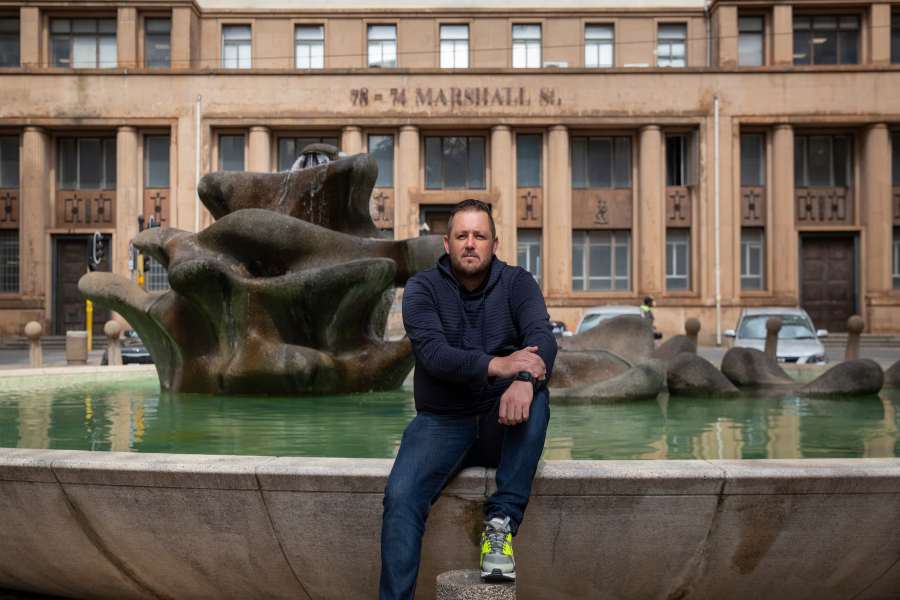Once hailed as the City of Gold, Johannesburg is battling a deepening crisis of inequality, neglect, and urban decay. As the South African metropolis prepares to host the G20 summit in November, questions loom over the city’s readiness—and more importantly, its commitment to its poorest residents.
In Berea, an inner-city district symbolic of Johannesburg’s slow abandonment, 64-year-old Bethabile Mavis Manqele has lived in a deteriorating house for nearly four decades. Through a translator, she explains that the structure, lacking electricity, plumbing, and a landlord, houses an uncertain number of occupants. The residents share one outdoor tap and a portable toilet maintained by a local NGO.
Her home is one of hundreds in downtown Johannesburg that have been abandoned by owners and filled by desperate tenants. Without formal rental agreements or utility services, these “hijacked” buildings are often overcrowded, dangerous, and unmanaged.
The situation reflects broader trends. Since the 1980s, Johannesburg’s wealthier residents and businesses have steadily relocated to northern suburbs like Sandton, deteriorating the downtown core. In recent years, service delivery across the city has declined sharply, with residents increasingly frustrated by failing infrastructure, poor sanitation, and limited access to clean water and functioning roads.
President Cyril Ramaphosa has acknowledged the crisis. In March, he described the state of Johannesburg as “not pleasing” and established a presidential working group tasked with reviving the city ahead of the G20 summit.
In the meantime, efforts to rejuvenate the city are emerging within its communities. Local business owners and volunteers have launched Jozi My Jozi, a public-private initiative dedicated to revitalizing Johannesburg’s inner city. According to Stephen du Preez, who manages 11 business improvement districts and is a leading figure in the project, the initiative has raised 75 million rand (approximately £3 million) and now includes about 140 contributing businesses.
Among its achievements: installing 613 solar-powered streetlights, cleaning public spaces, and creating employment opportunities for residents. Du Preez emphasizes that the initiative aims to uplift—not displace—existing communities. “We’re working with people, not against them,” he said.
But not everyone is convinced. Edward Molopi, from the Socio-Economic Rights Institute of South Africa (SERI), warns that many past urban regeneration efforts have led to evictions and gentrification. He cites developments like the trendy Maboneng district, which attracted investment but pushed low-income residents out. “Is there a place for the poor in the inner city?” Molopi asks. “Most initiatives answer in the negative.”
Johannesburg is considered one of the most unequal cities in the world, within the world’s most unequal country. The divide between rich and poor is both historic and geographic. Sandton, dubbed “Africa’s richest square mile,” thrives, while areas like Berea, Hillbrow, and inner-city townships suffer from underinvestment and neglect.
That disparity is rooted in apartheid-era policies that forced non-white residents into peripheral townships. Though apartheid ended in the 1990s, the urban landscape still bears its scars. Townships remain overcrowded and under-resourced, while leafy suburbs enjoy reliable services and infrastructure.
“These social fractures were present from the city’s founding,” says Noor Nieftagodien, a historian at the University of the Witwatersrand. When gold was discovered in 1886, Johannesburg grew rapidly, but along racial and class lines. Black miners were confined to camps in the south, while white elites lived in northern mansions. Today, those same divisions endure.
In 2023, the inner city’s decline culminated in a devastating tragedy: a fire at 80 Albert Street killed 77 people living in an abandoned, overcrowded building. An official inquiry blamed local authorities for ignoring safety warnings. The incident sparked public outrage and renewed debate over the city’s responsibilities to its poorest citizens.
The city government is implementing a “bad buildings strategy.” City spokesperson Virgil James confirmed that court orders have been issued to evacuate residents from at least six buildings. Occupants are to be relocated to temporary emergency accommodations, though details remain vague.
At Manhattan Court, a 108-room apartment building in the city center, residents are taking a different approach. For years, they have been paying the city a collective 25,000 rand per month for basic services while trying to secure legal ownership of the building.
Noma Qwele, a resident since 1986 and member of the residents’ committee, says the ownership of the building remains unclear following a public auction. Despite this uncertainty, tenants cover the costs of maintenance and security themselves. “This is our home,” she says. “We’re fighting for it.”
Sifiso Zuma of the Inner City Foundation, which supports Manhattan Court’s residents, says the city often ignores the willingness of poor residents to take responsibility. “If you are poor, they don’t care about you,” Zuma says. “These people want to pay for services, but the city won’t talk to them.”
Yet amid the crumbling infrastructure and stalled bureaucracy, Johannesburg remains a place of passion and creativity.
In Fordsburg, the walls of the Bag Factory art studios glow with color. Founded in 1991, the space is home to established and emerging artists, including bursary recipients from disadvantaged communities. Artist Levy Pooe’s vibrant orange mural adorns the building’s exterior, symbolizing hope and expression in a struggling city.
Afrofuturist artist Ndaya Ilunga, whose parents fled the Democratic Republic of Congo in the 1990s, explains why she remains committed to Johannesburg despite its challenges. “It’s always been a very vibrant city,” she says. “Now I’m part of that—the people who create that energy.”
As Johannesburg braces for the international spotlight of the G20 summit, its deep-rooted issues cannot be masked by short-term fixes. Activists, artists, and community leaders are doing the work governments have long neglected—but they cannot do it alone.
In the heart of a city built on gold, the true wealth lies in its people. Whether Johannesburg will finally invest in them remains the unanswered question.


